Hand dyed, variegated yarn. It’s the jam in our jelly rolls. The glaze to our donuts. The flip in our flop. Or, to put it simply, hand dyed yarn is the bread and butter of our colour fantasies. Most of us know, though, that it isn’t the easiest yarn to work with. In fact, for many knitters and crocheters, we might even experience some disappointment at the striping or pooling effects across the fabric. The good news is, that with a little give and a little swatching, you can maximize the full potential of those gorgeous hues. Lindsey Stephens and Tabetha Hedrick take turns playing with one of SweetGeorgia’s colour splash yarns, Anthem, to demo their ideas and tricks for dealing with variegated yarns.

Yarn featuring short colour splashes.

Yarn featuring short colour splashes.
The Crochet Perspective
Variegated yarns, those dyed with more than one colour, can be tricky to work with. The first thing to do is identify the type of variegation in your yarn. Splash yarns, like the SweetGeorgia Anthem colourway shown, feature short bursts of colour. If you pull out a strand from a skein, you’ll see tiny specks and midsize splashes of color along the strand. It’s important to understand how the length of the color splash affects how it looks in a crocheted fabric.
Crochet stitches have different heights: single crochet stitches are shorter than half-double crochet stitches, half-double crochet stiches are shorter than double crochet stitches, and so on. This means that the stitches also use up different amounts of yarn. You need less yarn for a single crochet stitch than you do for the much taller double crochet. Small speckles of color will make up only a solitary single crochet stitch or a spot on a double crochet stitch. Longer splashes can make up several single crochet stitches or one double crochet stitch.
If you look at swatch 1, you’ll see that single crochet rows look like they have colour patches traveling horizontally, while the double crochet rows look like the colour travels vertically. That’s the result of the height of the stitches. If your pattern calls for shorter stitches, expect your finished fabric to show more sideways, or horizontal, “movement” with the colour. Taller stitches will naturally draw the eye up, just like the yarn was drawn up to make a taller stitch.
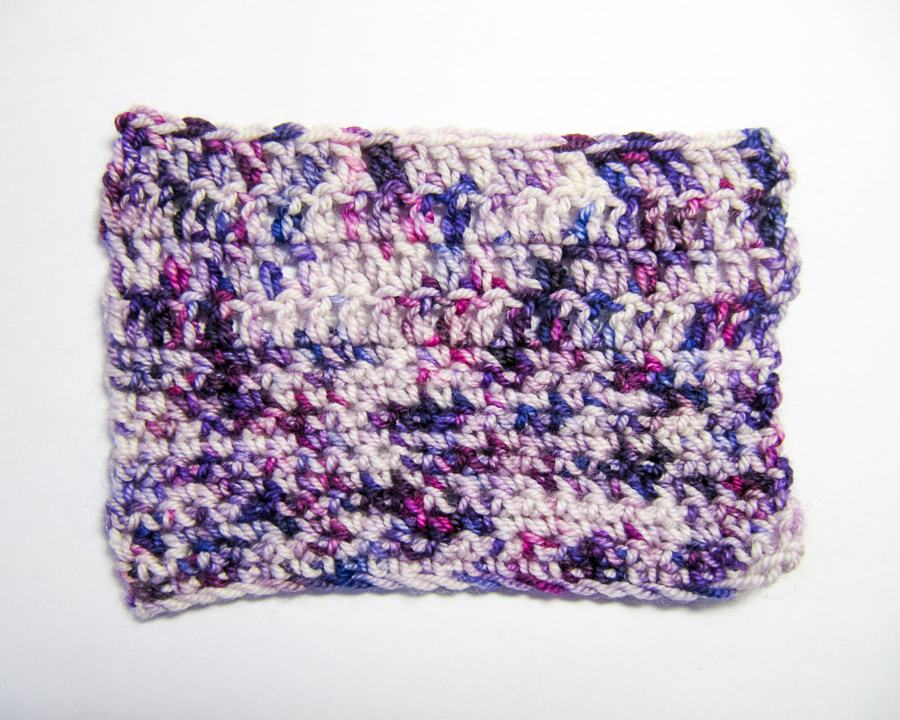
Pooling is the nemesis of crocheters everywhere. Pooling happens when sections of the same colour in a yarn wind up near each other in the finished fabric. You can wind up with a giant red column going up the front of your sweater or a massive orange blob smack in the middle of your scarf.
Thankfully splash yarns are not as prone to pooling as those with longer colour sections, but since it can still happen, make sure to avoid pooling by following one of these two tips: pick an ever-growing pattern or give the stitches room to breathe. When I say an “ever-growing” pattern, I mean one where you are always increasing or varying the stitch count. Think top down or bias shawls and asymmetrical sweaters. The constant change in stitch count is going to keep the yarn from regularly repeating the same colour in the same spot of the crocheted fabric. You can also give your stitches some room to breathe. This means to make sure there is something between your stitches: either empty space or another yarn. In swatch 2 you’ll see a simple mesh pattern. The spaces between the stitches separate the blocks of colour to prevent the feeling of pooling. You can also give your stitches space by alternating with another yarn. Work stripes, alternating your splash yarn with a coordinating solid color. That’ll visually break it up.
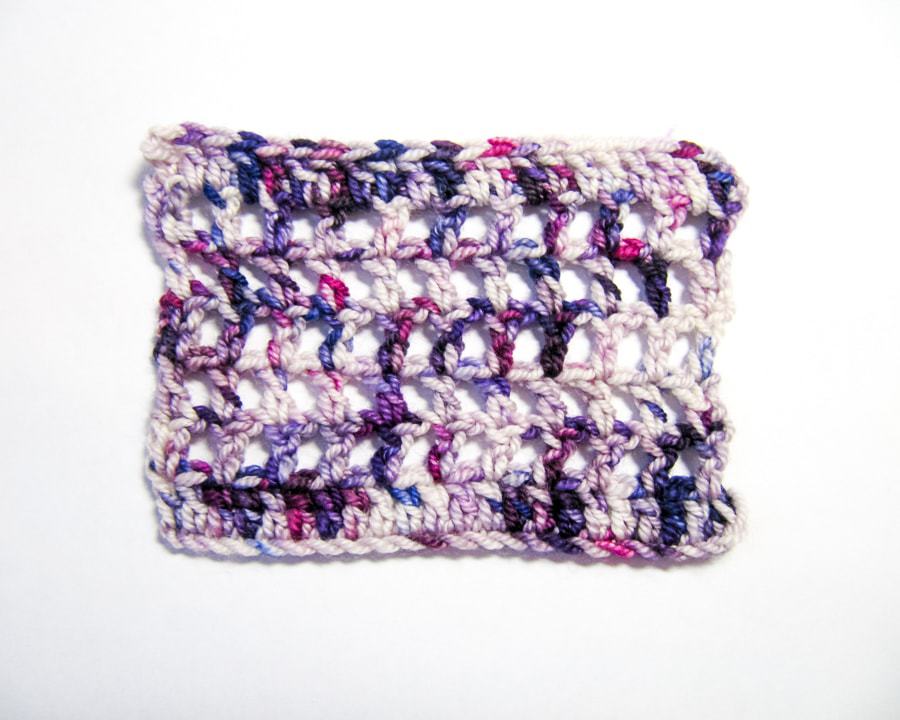
Remember, the delightful splashes of colour in the yarn will compete with the stitch pattern for your attention. Forget fussy cables or really intricate lace patterns. Those are not the right choices for variegated yarns. You’ll want a pattern with a visually simple design. I actually really love working motifs in variegated yarns. When you join the motifs, you can position them so that the splashes of colour are arranged in the most visually pleasing way.

Don’t be afraid to experiment with your splash yarn. Try a few different stitch patterns until you find the one that really lets your yarn sing.
The Knit Perspective
First, always swatch. I know, you hear this one a lot, but it bears repeating. For a variegated splash yarn like Anthem, you’ll know if the short colour repeats will work in your intended stitch pattern simple by running it through a few stitches with different size needles. The length of the colour repeat, paired with your needles and stitch count, will greatly affect where the colours fall in the pattern, as well as how often. For example, a short colour repeat will show up on only one or two stitches before the colour changes whereas a long segment can spread out across the row or multiple rows. We can see, in the swatch below, how the changing shades move quickly around both stitch patterns, but the use of “purls” in the stockinette stitch shift the colour stacks slightly.

Colour splash between garter and stockinette stitch.
With short colour changes, the repeats often towards a more random effect, with results that aren’t likely to pool. This means, though, that the colour patterns are quite busy and don’t really sit well with complex stitch patterning. Swatching will enable you to better see whether a busy stitch pattern can work with a busy colourway, or vice versa. Remember, a busy colour pattern doesn’t mean you have to avoid lace, but you’ll want to focus on stitches that are simple. You can see the easy columns of lace work with the active nature of the splashes in the bottom part of the swatch compared to the staggered lace at the top of the swatch.

Testing out two lace patterns.
Whether knitting with short or long colour segments in a variegated yarn, there are a couple of quick solutions that help fend off against any potential problems with pooling or weird striping:
- Alternate skeins: Whether from both ends of the same center-pull ball or with two different balls, start each right-side row with a different strand of yarn. This reduces pooling effects, while also blending the colours in a bit more. It’s especially useful for short colour segments and tonal yarns.
- Always try to start a piece (or section) at the same point in the colour repeat. This helps things line up a bit better.
- If colour pooling does occur, tink back a couple of inches and join new yarn from a different place in the colour spectrum.
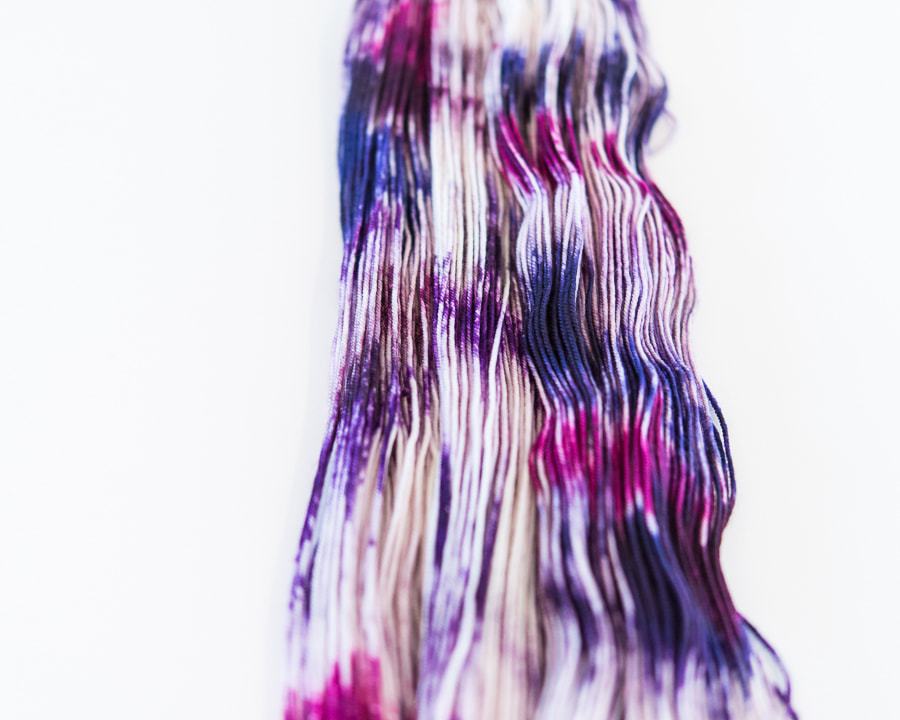
Regardless of your project or your craft, don’t be afraid to experiment. Swatch and test new patterns with your variegated yarn until you find one that makes your yarn sing.








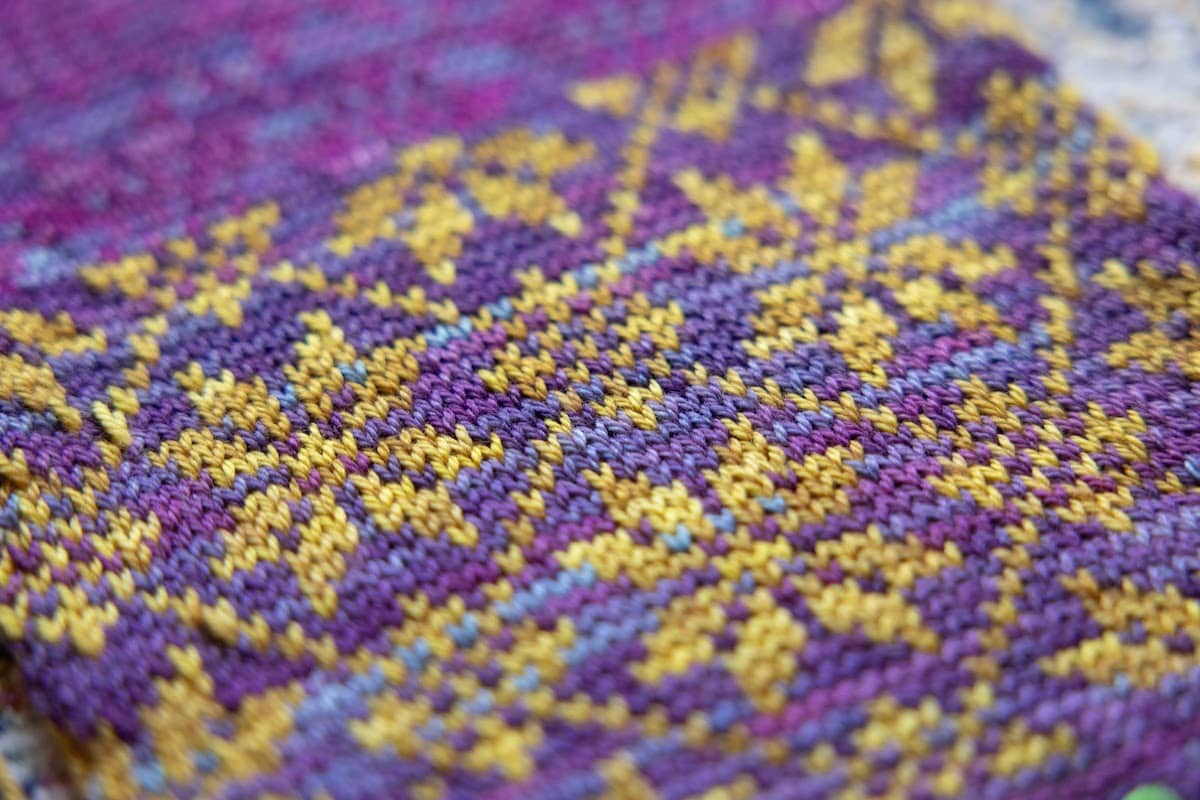
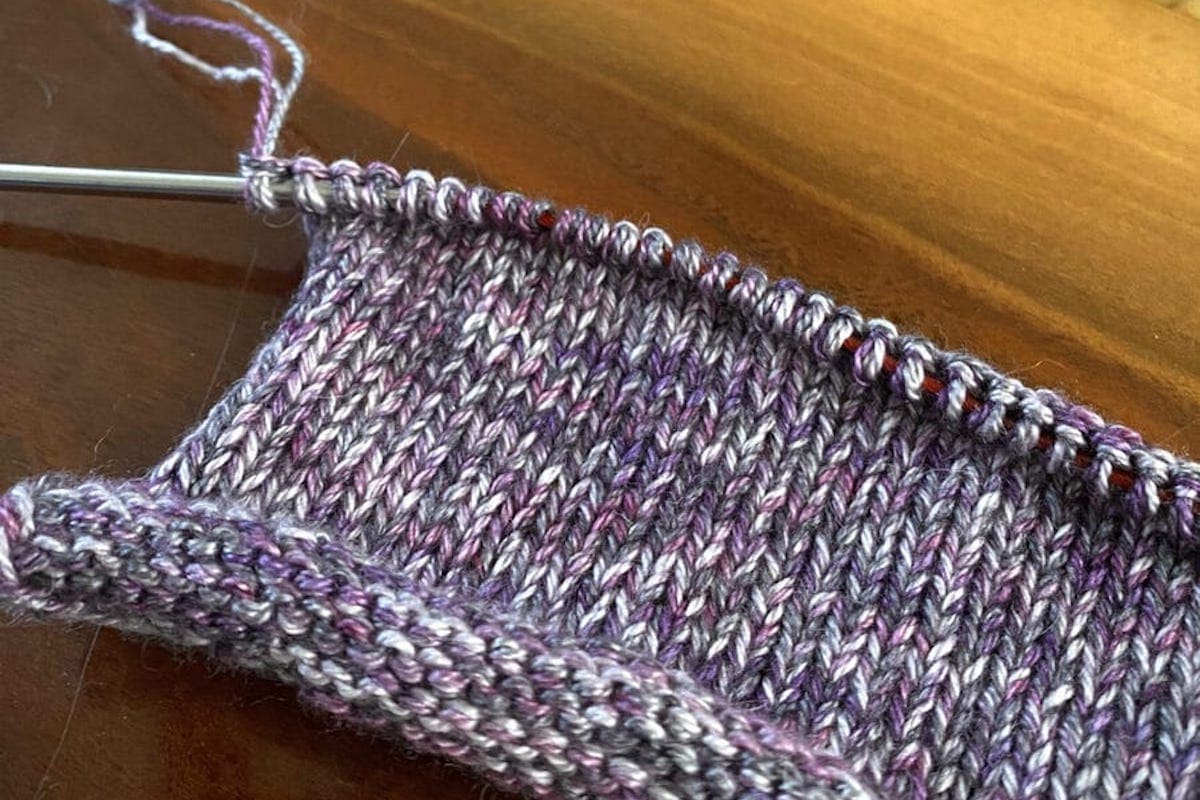




The biggest reasons I do not order speckled or variegated yarn is I can not picture them knitted. If there is any way to include a small swatch as above that makes all the difference. Thank you!
Absolutely. We have offered photos of all our yarns knitted up for several years now… you can find knitted swatches of all our colourways here: http://sweetgeorgiayarns.com/hand-dyed-colours/
They are knitted up at 60 sts around, so they mimic what it might look like if you knit them into socks :)
OMG! That is fabulous-thank you!
In crocheting a blanket using a DC stitch only, when adding a new skein the pattern changes. I am using variegated yarn.
What do I need to do to stop this from happening
?
Absolutely, if you start working with the yarn from the new skein without maintaining the colour sequence, then your pattern will change as you continue to work with the yarn. When you change from one skein to the next, maybe try overlaying the old yarn with the new yarn to see if the colours will line up. If the colour sections line up, you can see how/where you need to join the new yarn in order to preserve the colour sequence. Good luck!